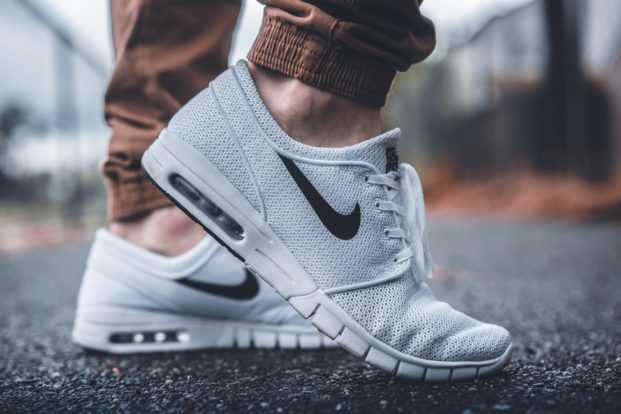Why Logos Are Vital to Growing Your Business

Think of your favorite brand. Really focus on everything that makes the brand your number one. Think of the best colors to represent your feelings towards the brand and perhaps the easiest way to communicate your favorite brand to anyone worldwide.
At this point, you are most likely visualizing your favorite brand’s logo, which is a great thing for the company that owns your favorite brand. Logos are a key component of a brand’s identity and often times the key “face” of the company. Not only that, but great logos can help to build brand loyalty and encourage target audiences to make purchases.
For these reasons, a quality logo is absolutely vital to growing your business. Whether you are rebranding or starting from the beginning, logos are one of the key ways in which customers become aware of your products, build product associations and memories, and communicate things about your product to other potential customers. Below are a few important things to consider when working on the design of your company logo.
Designing a Logo
Logos have an unparalleled ability to serve your business in that they are quick and easy to understand across an international platform. Over time, your logo will be inextricably linked to the products you are selling, so take the time to create a logo you will be proud of, and one that captures the brand image you are aiming for.
When sampling from other successful logos, it is clear that the simplest ones that are easy to remember and difficult to confuse often do the best. Your logo should be easy to recognize in both large and small print, as well as a variety of different marketing settings. It should also have an ownable link to your brand — so for instance, if your name was replaced with a competitor’s name, consumers would know the difference.
One of the most powerful ways to ensure brand recognition in your logo is to design something that captures the essence of your business. Nike is one of the most well-known and referenced examples of this. The company Nike pulled the name from the Greek goddess Nike, who was the goddess of victory. The swoosh in the logo creates a mental image of speed and flight, which are both qualities consumers are likely looking for in their athletic shoe purchase.

Logo Psychology
The type of layered psychology that Nike uses in creating it’s brand and logo is one that many successful companies attempt to emulate. When designing a logo, it is important to build something that evokes an emotional response you want associated with your product. The correct emotional response is critical to building the right mindset surrounding your product.
For instance, if you are selling luxury cars, your company may be shooting for a brand image that is sleek, powerful, and wealthy. In logo design, you may focus on developing an image that conveys this from a psychological perspective. The final product may use sharper lines and bold, clean fonts.
Alternatively, if your company is focused on selling stuffed animals to small children, the brand image will likely be completely different. Instead, you may be focused on creating something that is soft, fun, and safe. Your logo is more likely to have a rounded design to convey safety and bigger, cuter fonts for child-like appeal.
Color Matters
There are numerous aspects that go into creating a logo, but when it comes to logo psychology, there is one aspect that rises above angles and fonts: color. Numerous studies have indicated that the majority of consumers develop a lasting first impression of the brand within the first 90 seconds of seeing a product. Applied psychology suggests that approximately 90 percent of that impression is based upon color.

This information suggests that color plays a thoroughly outsized role in consumers’ ability to differentiate products and identify brands. Consumers’ assumed color appropriateness for a product also plays a role in determining how likely they are to choose that product over a similar product produced by a competitor. This is especially true with female consumers, as they are able to see a greater range of color shades and tones than men.
As you become more and more aware of color psychology, you will begin to notice trends amongst certain types of companies and their color schemes. For instance, black is a commonly used color in expensive or professional products, while blue is frequently used to convey safety and reliability. Colors such as red often evoke excitement and urgency, which makes it a great choice for clearance sales.
Inspirational Logos
If you are looking for inspiration, there are a variety of highly successful brands and logos to use as a muse. Nike, which was previously mentioned provides as great example of linking underlying psychology with simplicity. It is one of only a handful of brands whose logo has become so successful that it can be used as a standalone without the brand’s name attached.
Another successful brand to take some pointers from is Coca-Cola. The brand is famous for utilizing red and white colors as well as a signature font that conveys class and sets it aside from competitors. Coca-Cola has been around for a very long time and has only made minimal changes to the logo design throughout differing ad campaigns. This consistency helps reinforce brand loyalty and trust.
Mercedes-Benz is another company with a logo that has been extremely successful and no longer must be displayed with the company name for brand recognition. The silver color conveys elegance, dependability, and professionalism. The logo itself has built in symbolism with the three points representing the three arenas of the automotive industry: land, air, and sea.
Design a Logo For Your Business
Developing a logo is a critical component to successfully branding your company and propelling your marketing strategy. Logos help to build customer trust and long-term brand loyalty, so take the time to design something that conveys the messages your company wants to send. There are numerous aspects to logo psychology such as shape, fonts, and especially color. This guide on how to design a logo from Looka is a good resource to read. Be sure to incorporate these and you will be well on your way to brand success!
This guest post was authored by Brooke Faulkner

Brooke Faulkner is a writer, mom and adventurer in the Pacific Northwest. She spends her days pondering what makes a good leader. And then dreaming up ways to teach these virtues to her sons, without getting groans and eye rolls in response.

